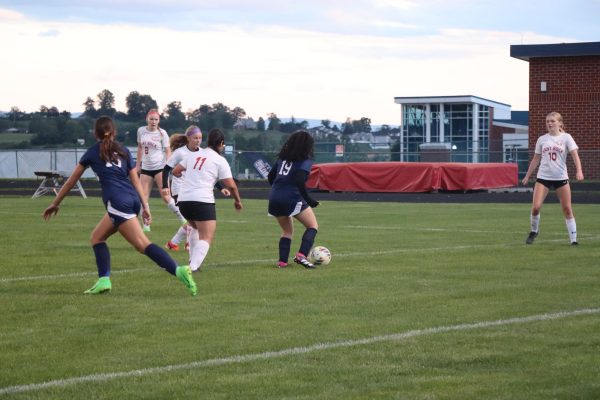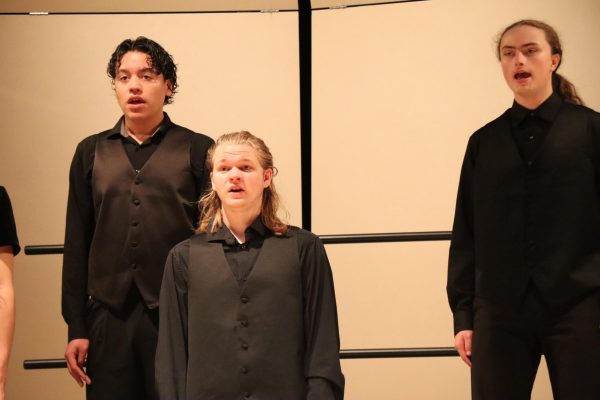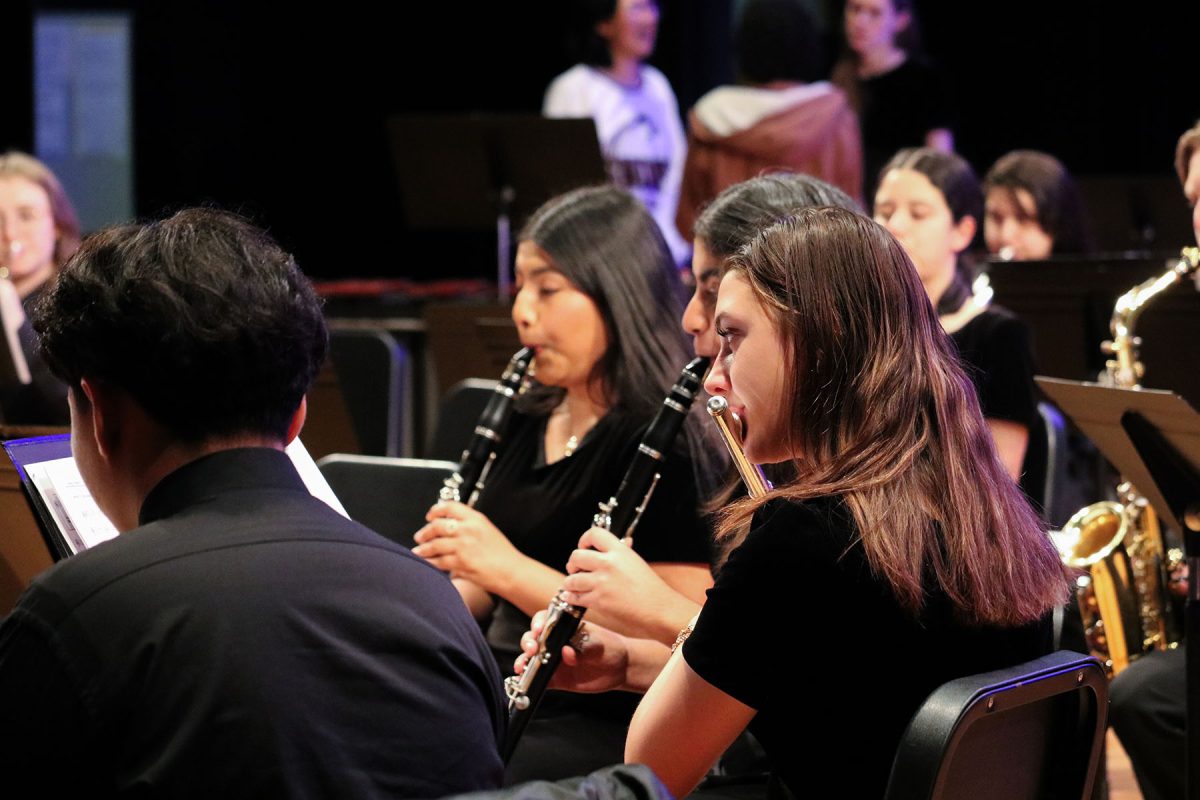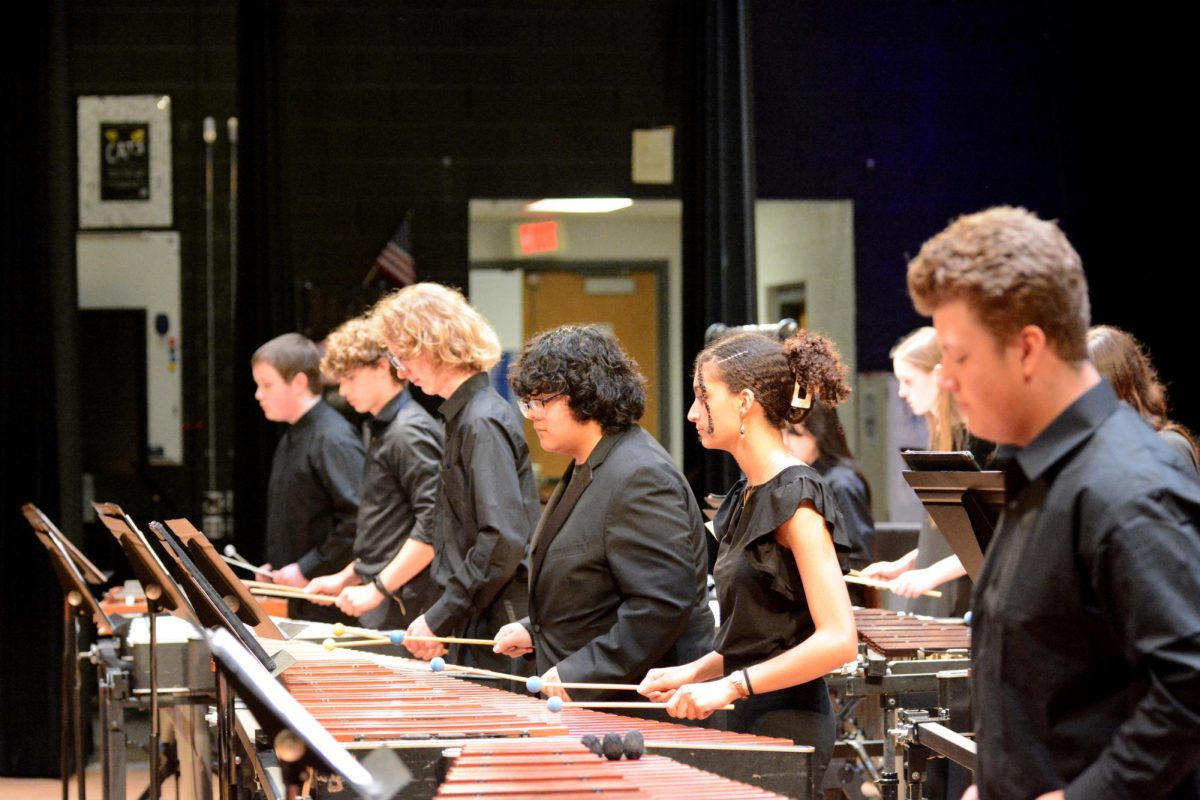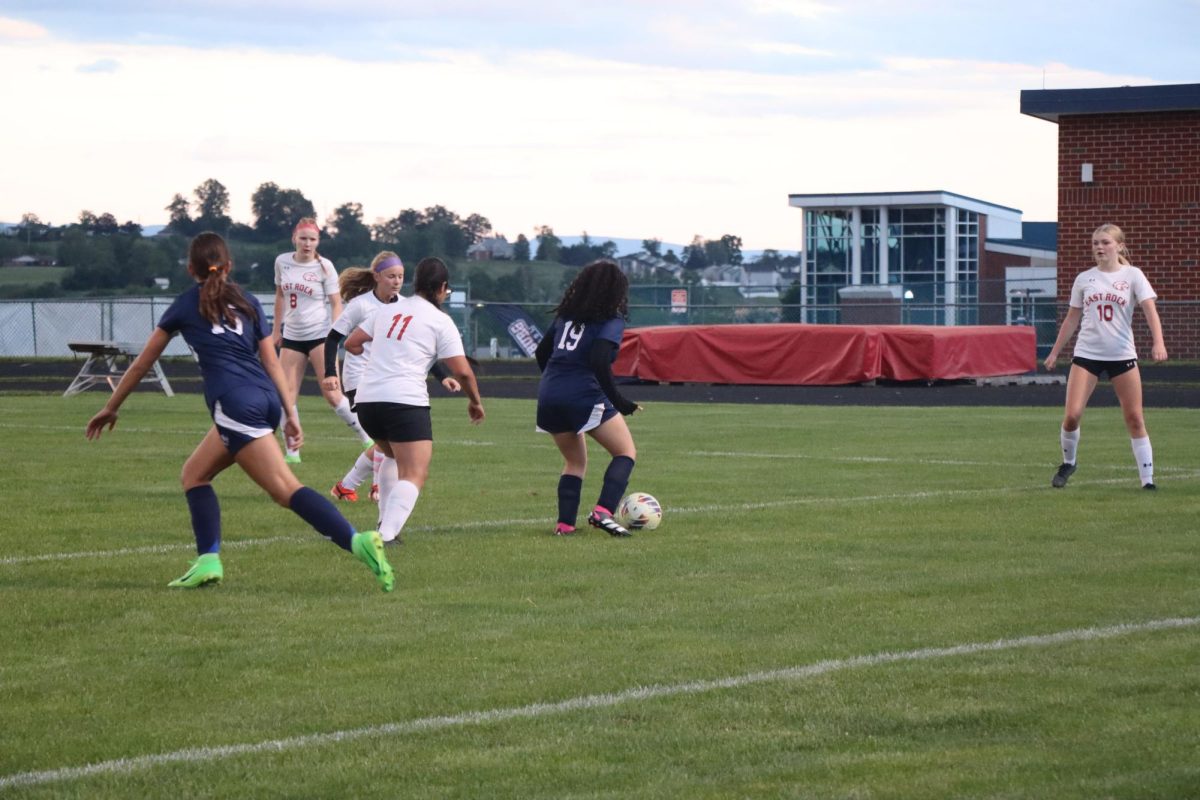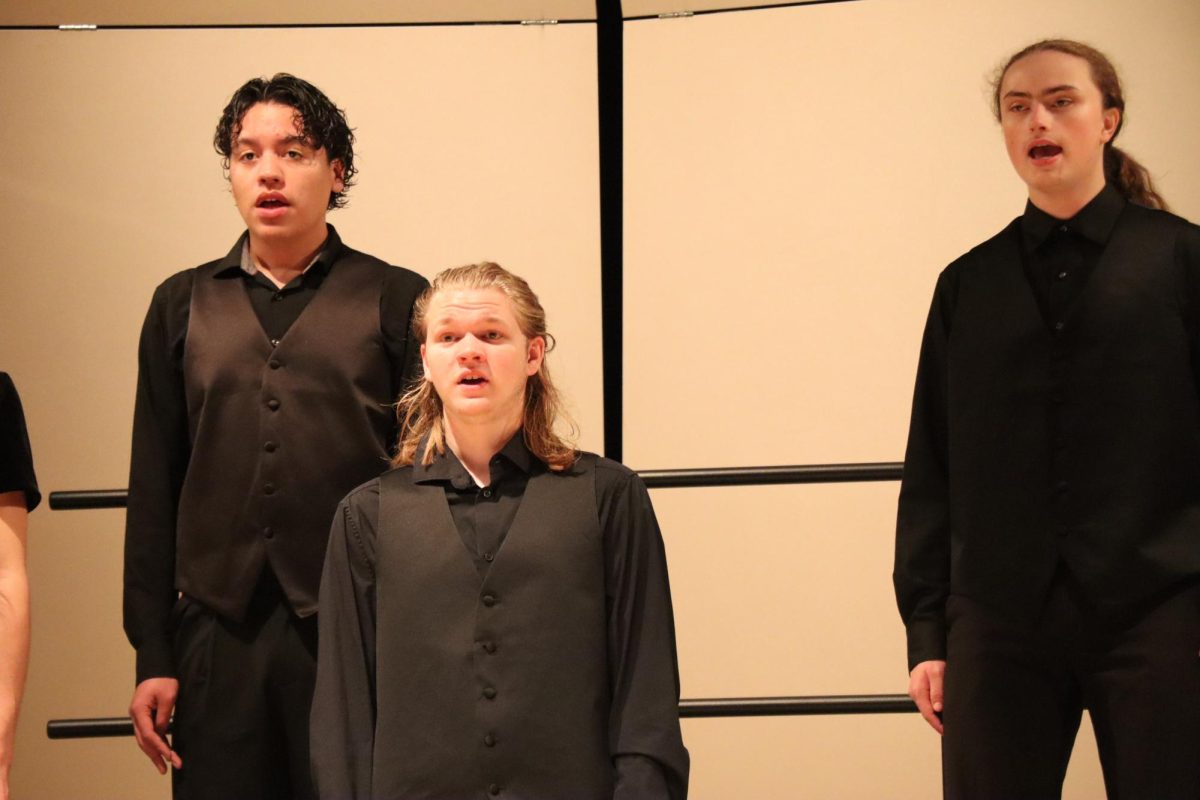Teachers speak out against nationwide teacher shortage
English teacher Emilee Hussack sits by a student to provide one-on-one feedback.
February 16, 2023
“Right now [my planning is] at night after my daughter goes to sleep. Instead of relaxing, I am now planning,” English teacher Emilee Hussack said.
Most of the time teachers have a planning block in between their classes, allowing them to only teach three classes. This planning block is vital in a teacher’s job. During first semester, Hussack taught four blocks in a row. Without a planning block, teachers must stay after school or come in early. For Hussack, she chooses to use time after school. Hussack estimates that she uses around two hours after school and when she gets home, two more hours. That’s a total of four hours after the regular school day.
The combination of the overcrowding problem and the teacher shortage makes classrooms crowded and understaffed.
Hussack recalls teaching a class with around 33 students in one block last year.
“We have a capacity for the amount of equipment we can use. Then everyone can’t get on a computer or get a camera in their hand, it’s down time or busy work, which is frustrating to students,” Hussack said.
Many other teachers have also experienced teaching a large number of students. Math teacher Robin Church has around a total of 100 students in total in her three blocks this year. Teaching a bigger number of students comes with a variety of struggles.
“It’s difficult to manage all of those students, with different needs and different backgrounds and some have extra needs,” Church said.
Church explains that basic tasks in a teacher’s job like, grading, remembering names and getting a class system down, becomes harder with that many students over capacity.
“It’s more grading, more papers to go through. When we take a quiz I go back and see where they [made] mistakes so that I can help them in check and connect time, and that [all] takes more time,” Church said.
Beyond the numbers
Even though the numbers of students and teachers play a big part in the teacher shortage, the effect goes a long way. Beyond the numbers, the atmosphere of a classroom changes if teachers have to teach more students.
Sometimes the effects can come in the form of not truly connecting to students. Many teachers, including Hussack, value connecting with students in the classroom.
“Depending on the class, under twenty really feels intimate. One of the best classes I had was ten [students]. We moved a lot faster through things and it was easier to take a break,” Hussack said.
Church also believes that teaching less students improves learning.
“I am now teaching Algebra 1, so less students is better because some of these students need a lot of extra help,” Church said.
At other times, the effects of the teacher shortage could mean that teachers have more stress to deal with if they need to be absent.
“A lot of times it’s just easier to be here and I think that’s going to be a concern because we shouldn’t come to school if we don’t feel well, but now we do,” Hussack said.
Being absent as a teacher can cause guilt, when it is so hard to find someone to cover your blocks.
“There’s so much to organize to be absent and if there’s no coverage [then] there’s this strange guilt we experience when people from our department have to cover,” Hussack said.
Covering Classes
There are some instances where there doesn’t have to be staff from the department covering blocks, and instead there is a substitute teacher available. For example, math substitute Cameron Byer, is covering a whole semester for Algebra 2.
At first getting used to the system of school and teaching high school students didn’t seem that hard, however one aspect that he did find difficulties with was, once again, the class size assigned to one teacher.
Byers is teaching around 70 students every day.
“Some days I feel like with what we’re doing, there are lots of questions about the material and it would be easier and more manageable if I had fewer students and I can address all the questions,” Byers said.
Like many teachers, Byers is also put in a position to not have the ability to give all his students the same assistance.
“It feels like I need to choose between getting through all the material and not answering everyone’s questions or not making it through all the material and trying to answer everyone’s questions,” Byers said.
When there are not enough teachers or substitutes to replace a teacher, other staff have to cover those blocks.
“What we’re seeing now is central office staff are also pushing into schools to cover blocks, administrators in the school [are] covering blocks,” Hensley said.
From a Students Perspective
All of sophomore Ruba Mustafa’s classes are crowded with students. From the beginning of the year, she noticed that her teachers were struggling with teaching that many students by themselves.
“I can sense the stress from the teachers teaching that many students and trying to meet all of their needs,” Mustafa said.
As the school year went on, she found more struggles arising with the teacher to student count.
“There’s a lot of students and only one teacher and it’s uncomfortable because there are so many students, and it’s harder to get used to everyone. I haven’t been as comfortable as I was in other classrooms,” Mustafa said.
She often finds herself being more reserved in those classrooms.
“I am less inclined to talk and interact because there are so many students. I either just let other students talk or I’m too nervous to talk and it’s not just me. I know many friends going through the same thing as me, and it can be hard for a teacher to notice that when she’s teaching that many students,” Mustafa said.
According to Principal Melissa Hensley, this year if HHS didn’t hire teachers later in the year, the school would have been down seven positions. There also have been classes that were supposed to be offered this year, but aren’t due to lack of instructors applying for the positions.
“We wanted to add a healthcare science position this year. We only have one applicant for it. We know [for] students, healthcare is a big one. A lot of our students really enjoy that pathway. We weren’t even able to secure an applicant board,” Hensley said.
There has been a major shift in how many applicants apply for teacher positions post pandemic.
“We [used to] pull between 10 and 25 applicants [for one position] and now we’re lucky if we see three or one, in some instances, it’s really dropped off post pandemic,” Hensley said.
The issue of the teacher shortage doesn’t stop at hiring teachers, but it also continues with teachers leaving. Many teachers no longer see value in working as a teacher and decide to leave the job for something that is more rewarding.
“There are people who have left to work with curriculum writing and things like that with other organizations. Still kind of connected to education, just in a different way making a lot more money than our teachers,” Hensley said.
Moving Forward
Some pressure might be relieved from the HHS school building when the new school is built. Splitting the student count to the newly built school could help teachers have smaller class sizes to manage. Even though there could be conflicts with finding more teachers to teach at the new school.
“I am hoping that a smaller group [in the] building allows all of us to build a tighter community,” Hensley said.
There has been a rise in requests for student teachers. This could be a look into the future that shows that there is still interest in the teaching profession.
Until then there is very little that can be done in order to ease the teacher shortage at HHS. Although it is not as severe as other places, we are still seeing a lot of vacancies in teacher positions that most likely will not be filled in time.




